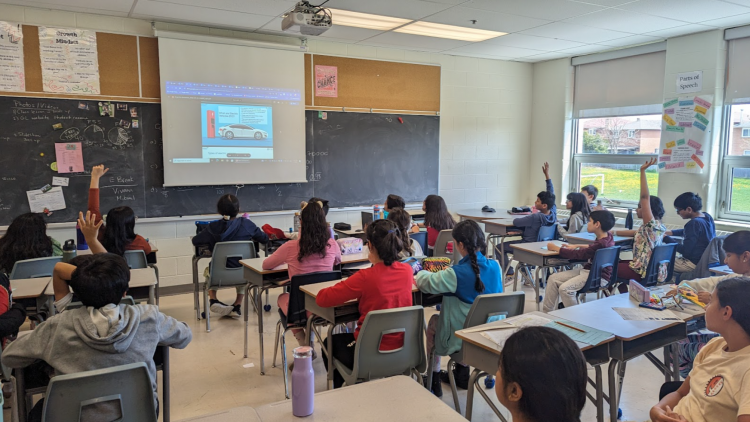Educators are given the unique opportunity to inspire the next generation to become stewards of our planet. Setting up a classroom to model sustainability is a great way to reduce your school’s ecological footprint and to also enrich your students' learning experiences. This can help reduce eco-anxiety by helping them see that they can make a difference and be part of the solution. Whether you are taking your first steps in creating a sustainable classroom or looking for ways to enhance your existing classroom, this blog provides you with different tips and resources to create a space that will nurture environmental stewardship and empower students to make their own positive impacts.
Sustainable Materials and Supplies - an easy first step
There is often a pressure and social norm when the school year begins that you need to buy all new supplies and materials for classrooms. However, many classroom materials can be reused year after year or repurposed into something else. When new supplies are needed, consider second-hand stores as a great option for materials like bags of pens, markers, and other art supplies. For new purchases, you can explore more sustainable options like notebooks made from recycled paper and plastic-free products. It is a great idea to encourage your students to do this as well.
Integrating Environmental Education into your Curriculum
GreenLearning offers a comprehensive set of resources and activities that align with most schools' curriculums. They can be integrated into various subjects, from art and social studies to math and science. You can choose one or two activities from our resources section or use one of our programs for deeper learning on a variety of energy, climate change and circular economy topics.
Another great way to integrate environmental education into your lesson planning is through GreenLearning’s challenges. With five different challenges available, tailored for grades 3 to 12, you are able to find a challenge that best suits your class. Not only are the challenges fun, they are a great way for students to demonstrate their learning and use problem-solving and critical thinking skills. Throughout the school year, the projects can be worked on and will keep environmental stewardship at the top of students’ minds. A link to all of our challenges can be found here.
Sign up for our newsletter to receive tips and fun ways to engage throughout the year.
Year Round Learning
Incorporating different eco-days into the week allows learning to be spread across the school year and helps create regular routines for you, your students and parents. This can include things like ‘Eco-Lunch Wednesdays’ where you encourage your students to bring a plastic free lunch and ‘Fresh-Air Fridays' where a certain portion of the day is spent learning outside. Another idea that can work well with younger grades is to assign different classroom jobs that are eco-related. Jobs could include someone who makes sure the recycling is sorted or being in control of the classroom compost. These jobs give students a sense of responsibility while teaching them about the small changes they can make for our environment.
Starting an Eco-Club
Creating an eco-club provides an opportunity for your school to focus on a variety of eco-actions. Students share their own ideas on what can be done in the classroom and around the school to become more environmentally responsible, then develop and implement action plans. Eco-clubs can be in charge of different things like creating events for Earth Month/Day or energy saving hours. An eco-club will empower students from various grades to become leaders in their school as they lead environmental actions. Our challenges also provide inspiration and motivation for eco-club action projects. Joining EcoSchools can help your school achieve various levels of certification to recognize your environmental achievements and our challenges can help you achieve your EcoSchools goals.
With the new school year approaching, now is the time to start thinking about what can be done to promote and demonstrate sustainability in your classroom. Any steps taken are extremely beneficial to students' minds and can also create a positive influence on other classrooms within the school. Small changes and adaptations like these will enable students to share the initiatives going on in their classrooms and amplify their impact on promoting sustainability. If you’re starting out, choose a lesson from our many resources, you’ll be surprised where this leads you and your students.


